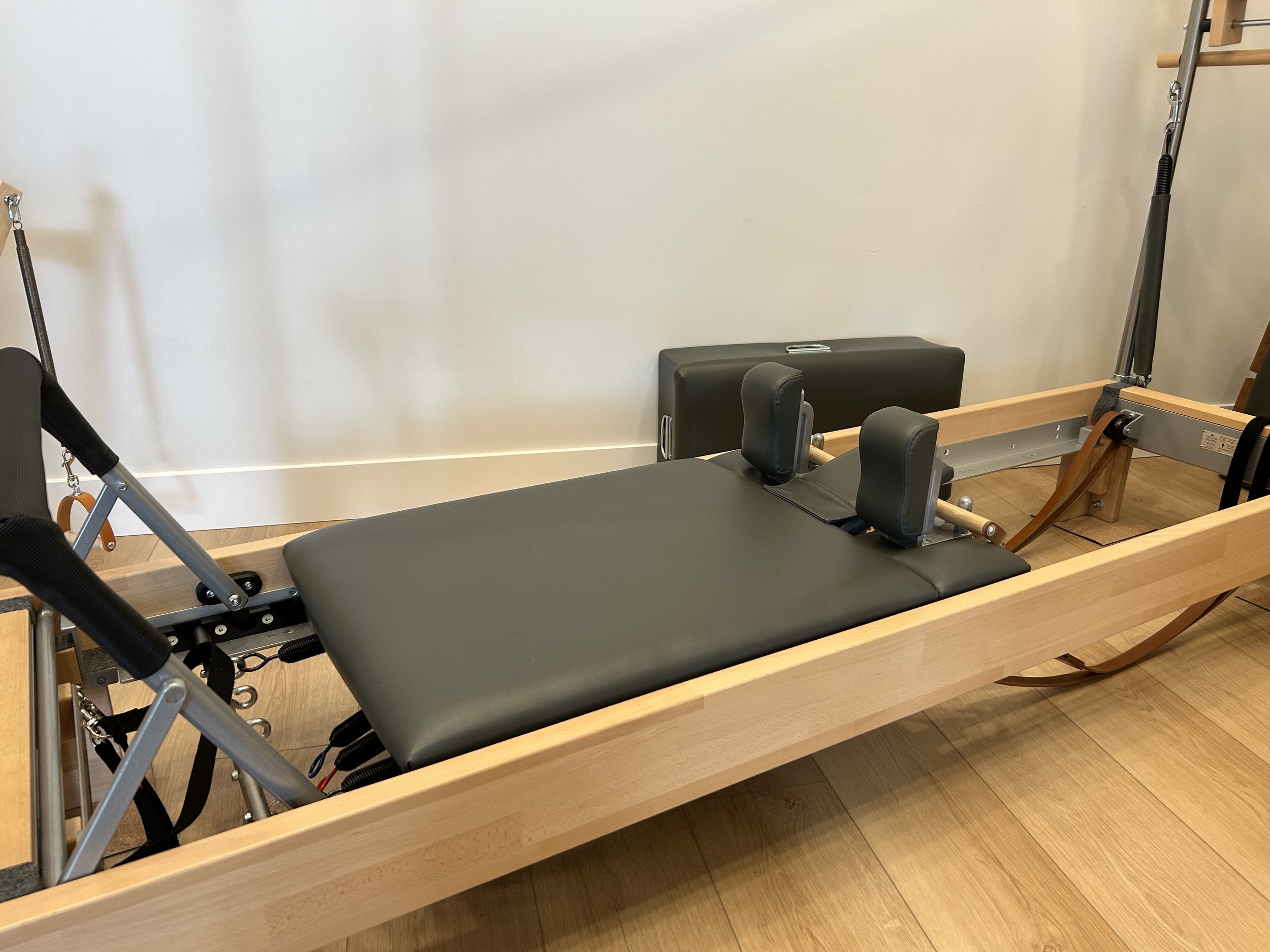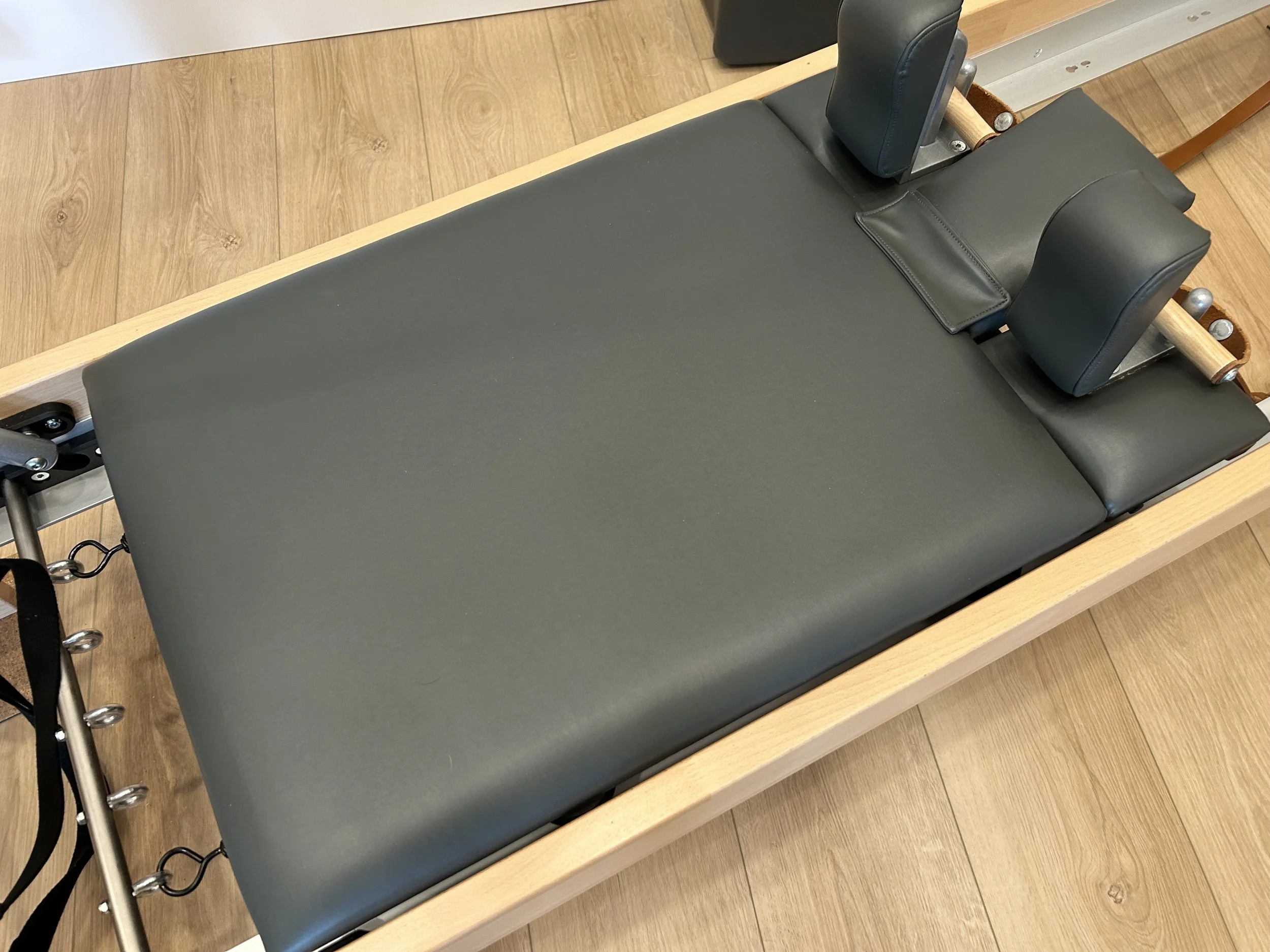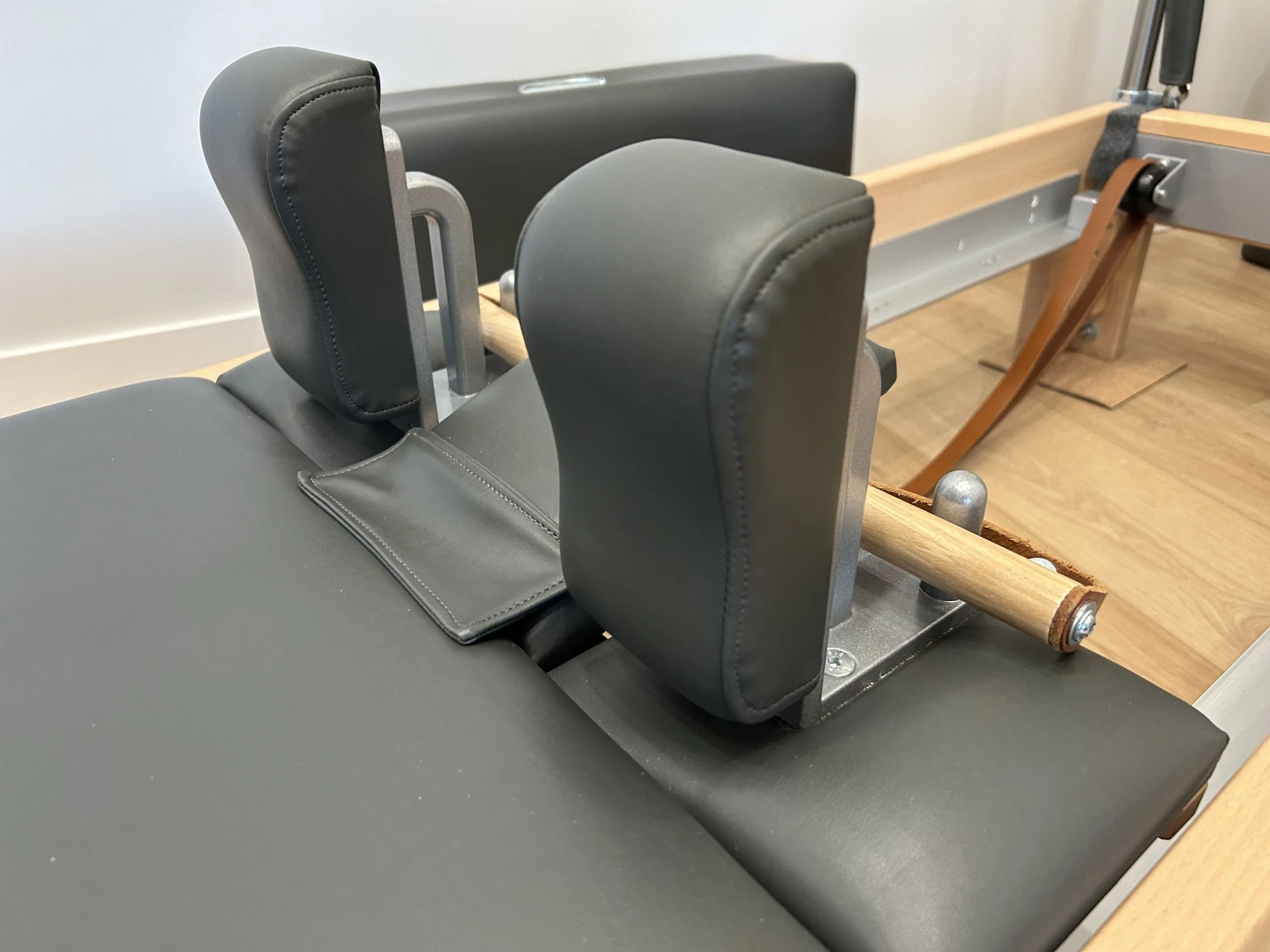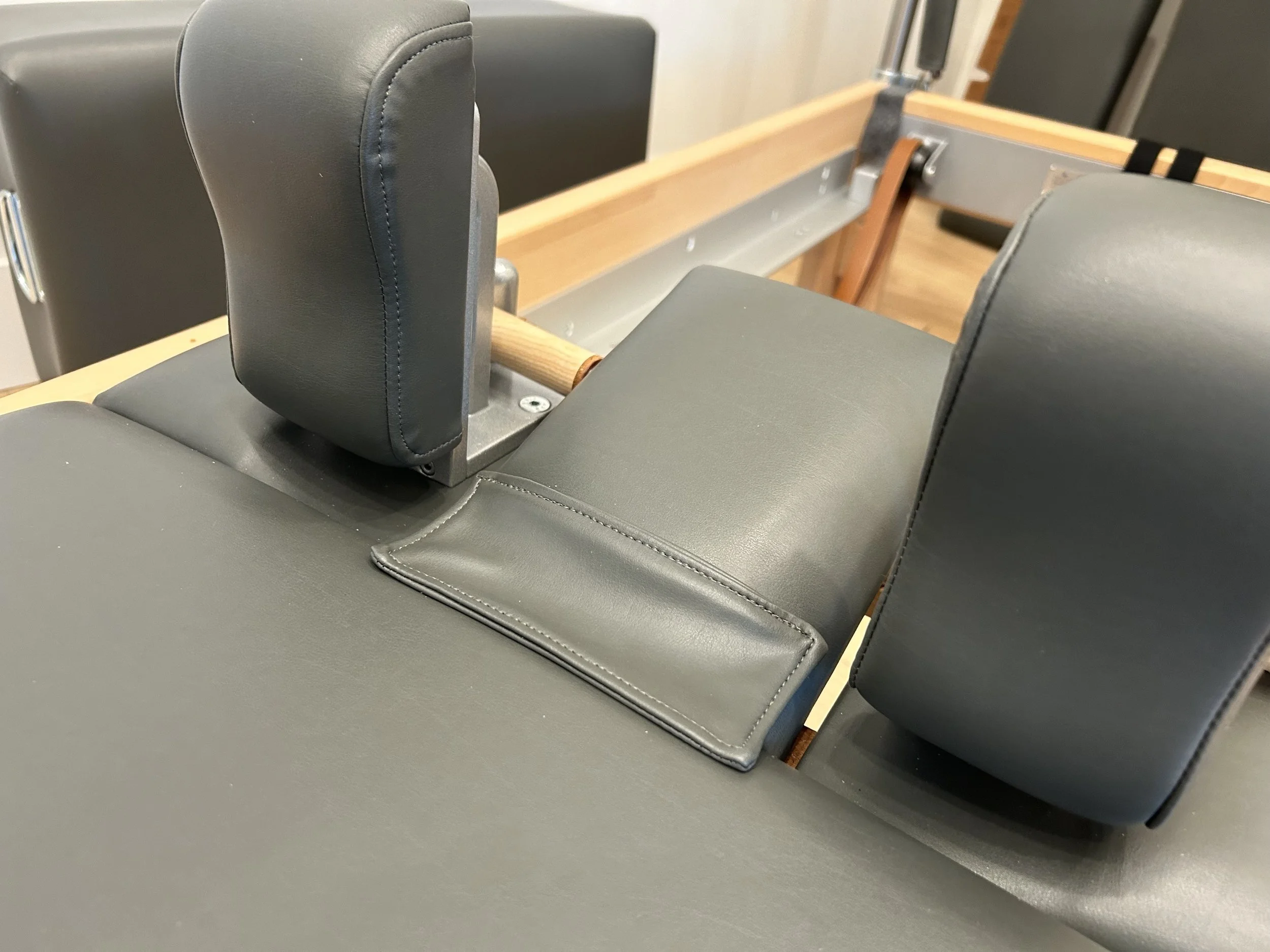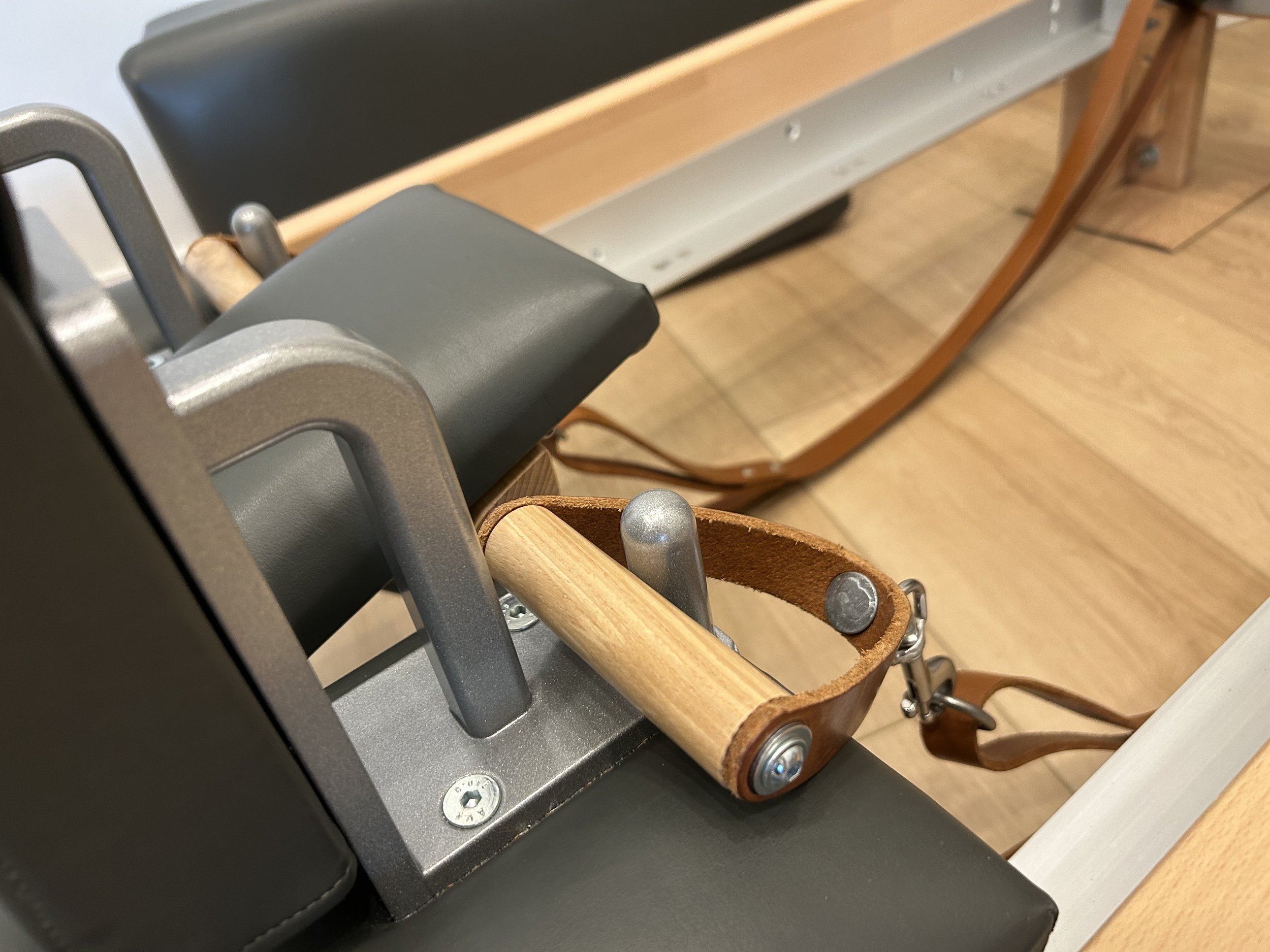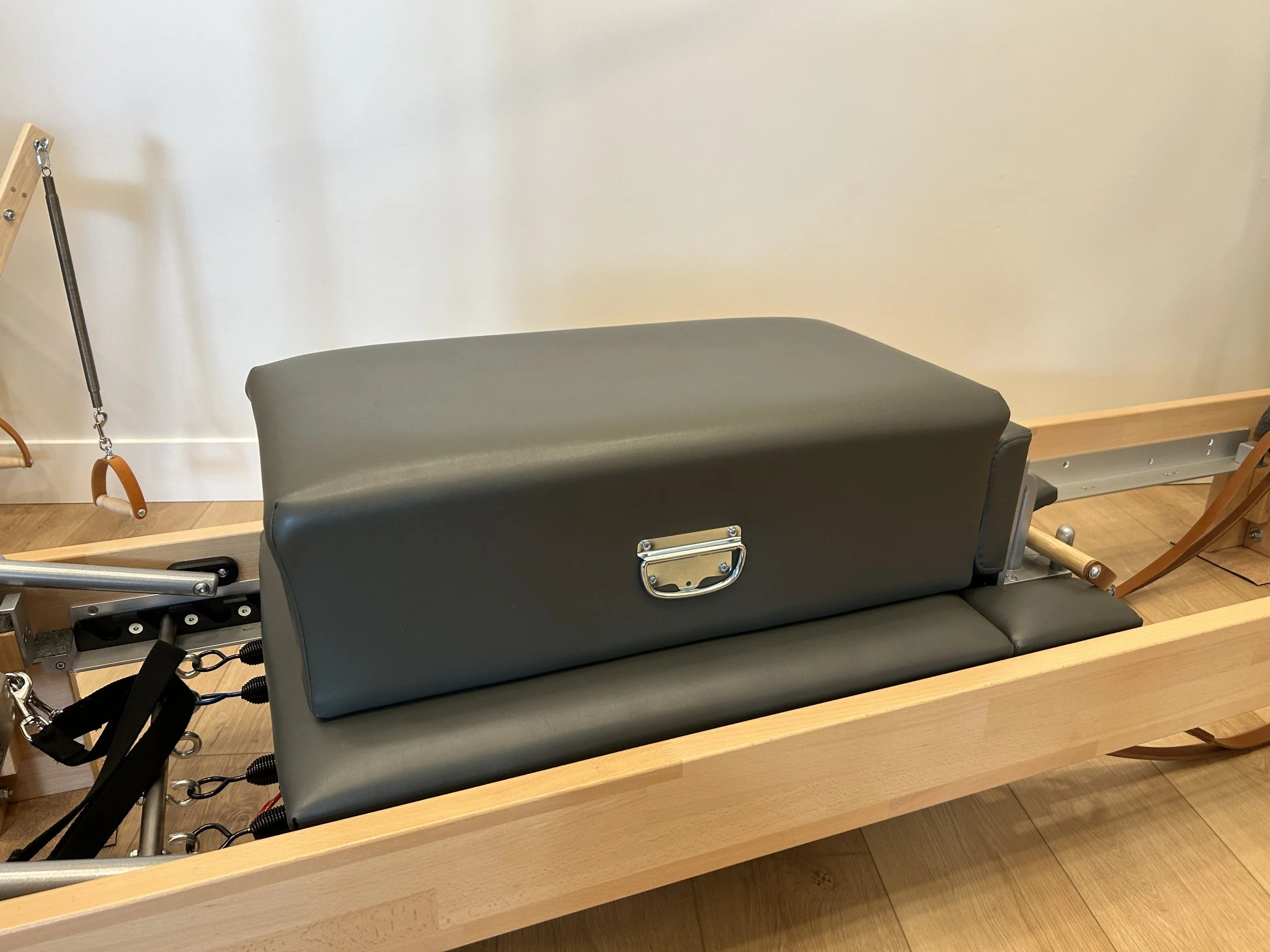The Universal Reformer
Several weeks ago I posted an article about the history of Pilates and why it’s recommended by health professionals to add Pilates workouts to your current exercise routine. If you missed reading it, please head to my blog to take a peek.
I thought to create a series exploring each piece of Pilates equipment (aka apparatus) with the history and benefits of each. Today we explore the Universal Reformer :)
Reformer History
The idea of the Reformer came about early, around 1915, when Joseph Pilates was forced to live in a German internment camp in England during WW1 for four years (Rincke, 2019). To keep his follow internees strong and healthy he led fitness classes and boxing competitions (Rincke, 2019). There is evidence he worked in the hospital barracks with access to beds with springs that he used as strengthening devices for the sick and wounded (Rincke, 2019).
In 1926 Joseph arrived in New York and devised his first “Reformer”, patenting it on March 15, 1927 (Rincke, 2019). He didn’t call it a Reformer in the beginning, it is listed as a “gymnastic apparatus” on the patent (Rincke, 2019).
After he refined his Reformer apparatus along with the “Cadillac” (similar to the Tower), starting in 1929 Joseph Pilates began to become very popular as the healer of injuries, especially for athletes and dancers (Rincke, 2019). His Eighth Avenue studio became New York’s most important location for rehabilitation (Rincke, 2019).
Reformer Elements
The Universal Reformer is the most widely known piece of apparatus Joseph Pilates invented. It’s very versatile with it’s unique combination of springs, pulleys, straps, and sliding carriage to support and challenge the body while strengthening it. Its adjustability enables the Reformer to address a wide range of physical capabilities, limitations, injuries, and fitness goals (Alpers et al., 2002). Joseph created nearly 100 exercises to use on the Reformer - more than any other piece of apparatus he designed (Alpers et al., 2002).
The Carriage
This Reformer has a padded carriage that has wheels placed on top of a metal track within a sturdy wooden frame. We lie, sit, and kneel on the carriage all the while activating our important core muscles to move the body from the inside out.
Shoulder Blocks
On the carriage there are comfortable padded shoulder blocks.
Headrest
And an adjustable headrest that has three settings.
Handles & Straps
Each Reformer has two wooden handles to hold with our hands to build strength in our upper body and two loops attached to those handles we put on our feet to create mobility in our hips (while stabilizing from our centre).
Footbar & Gearbar
There is a footbar at one end of the wooden frame. We put our feet on it to build foot and leg strength, as well as, hold with our hands to perform controlled moving planks.
There is a gearbar at the same end of the frame that holds up to five springs. The springs create the tension needed to challenge and support as we build our bodies strong and flexible.
Sitting Box
The sitting box creates even more variety of effective exercises, like Short Box Abdominals Series, Lunge Series, Prone Pull Straps Series, Long Box Teasers (everyone’s favourite, right?), and Long Box Swan (another fave!).
Reformer Benefits
All Pilates exercises originate from the powerhouse (our core!), and the Reformer helps make important core connections with it’s added support (Alpers et al., 2002).
The Reformer differs from traditional fitness equipment in very fundamental ways. Rather than using an isolated set of muscles to move an external force (such as a barbell or stack of weights), you use your powerhouse to lift and pull your body’s weight along with the Reformer’s spring-loaded carriage (Alpers et al., 2002).
Many torso muscles make up the powerhouse (abdominals, low back muscles, spinal erectors, glutes, inner thighs, pelvic floor to name a few) and when they work together in balance, they create a central axis within the body building internal strength so our bodies move more functionally (Power Pilates, n.d.).
When Joseph Pilates developed a series of exercises for the Reformer, he intended them to be performed in a specific sequence and manner that would result in a nearly constant, flowing workout (Alpers et al., 2002). You inhale as you push the carriage out for footwork to begin your Reformer workout nonstop that finishes as you exhale during the last exercise to stand up off the reformer (Alpers et al., 2002). Each exercise beautifully prepares your body and mind for the next one, warming your muscles, sharpening your senses, stimulating your organs, increasing your circulation, and reducing your stress as you coordinate your breath with your movements - all the while training your muscles to “fire” correctly and in balance (Alpers et al., 2002).
Movements on the Reformer are meant to be intentional so muscles are activated evenly and the exercises condition your whole body, producing the muscular balance needed for activities of daily living (when home and at work), as well as, for sports (Balanced Body, n.d.).
Ah, the beauty of the Reformer!
Resources
Alpers, A. T., Segel, R. T., & Gentry, L. (2002). The everything Pilates book: The ultimate guide to making your body stronger, leaner and healthier. Adams Media.
Balanced Body. (n.d.). Studio Reformer. Balanced Body. Retrieved September 14, 2024, from https://www.pilates.com/products/pilates-studio-reformer/
Power Pilates. (n.d.). What is the Pilates Powerhouse? Power Pilates. Retrieved September 14, 2024, from https://www.powerpilates.com/encyclopedia/?a=53
Rincke, E. (2019). Joseph Pilates—A Biography (2nd ed.). Inner Strength Publishing.


